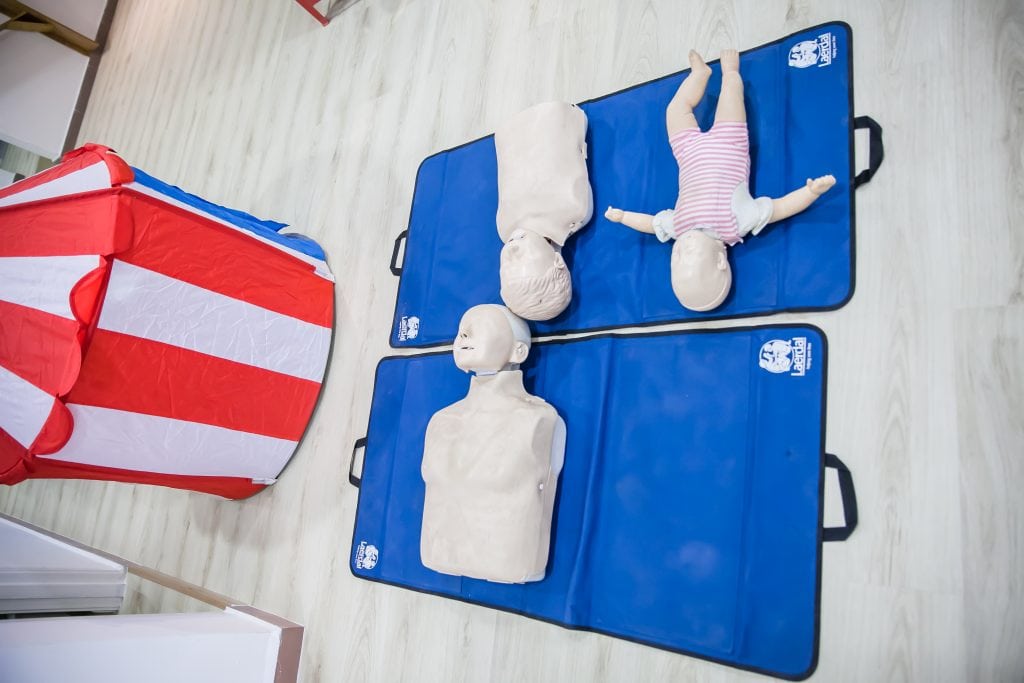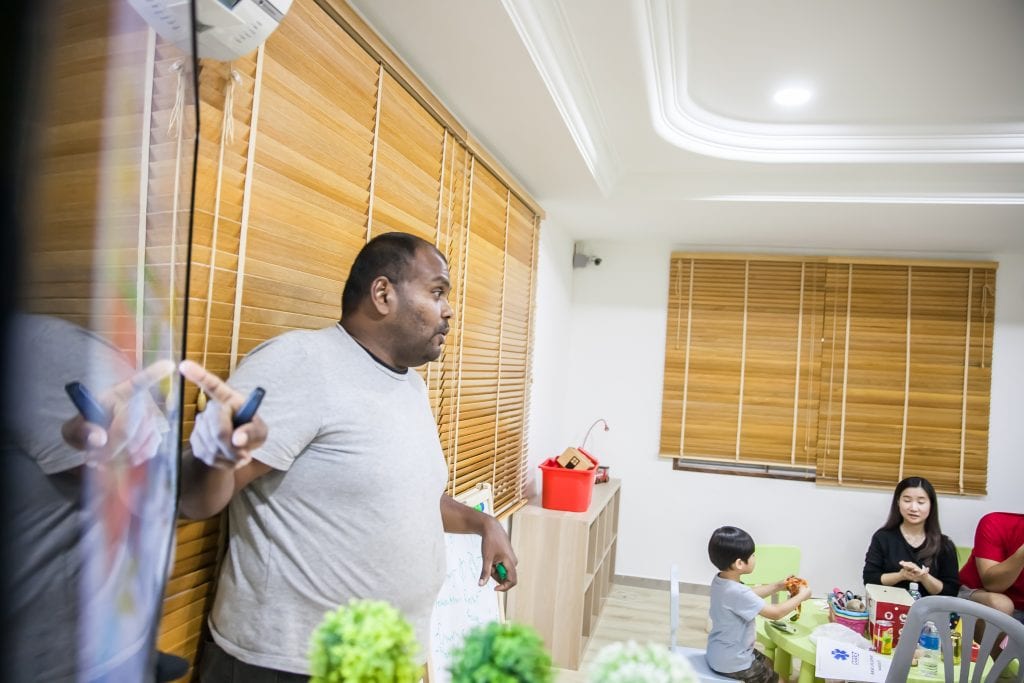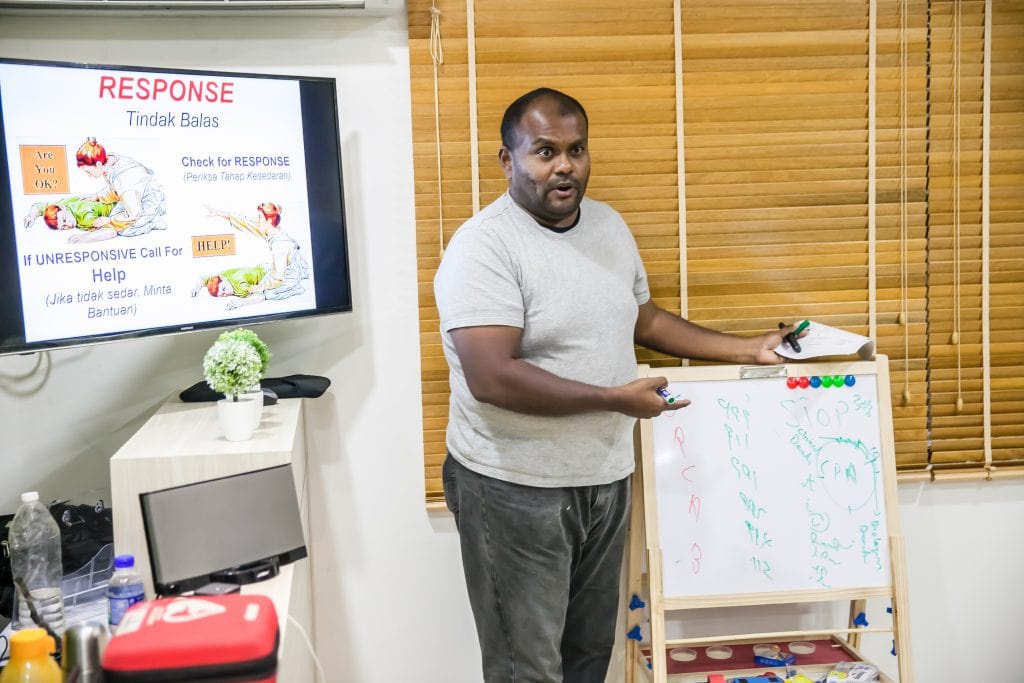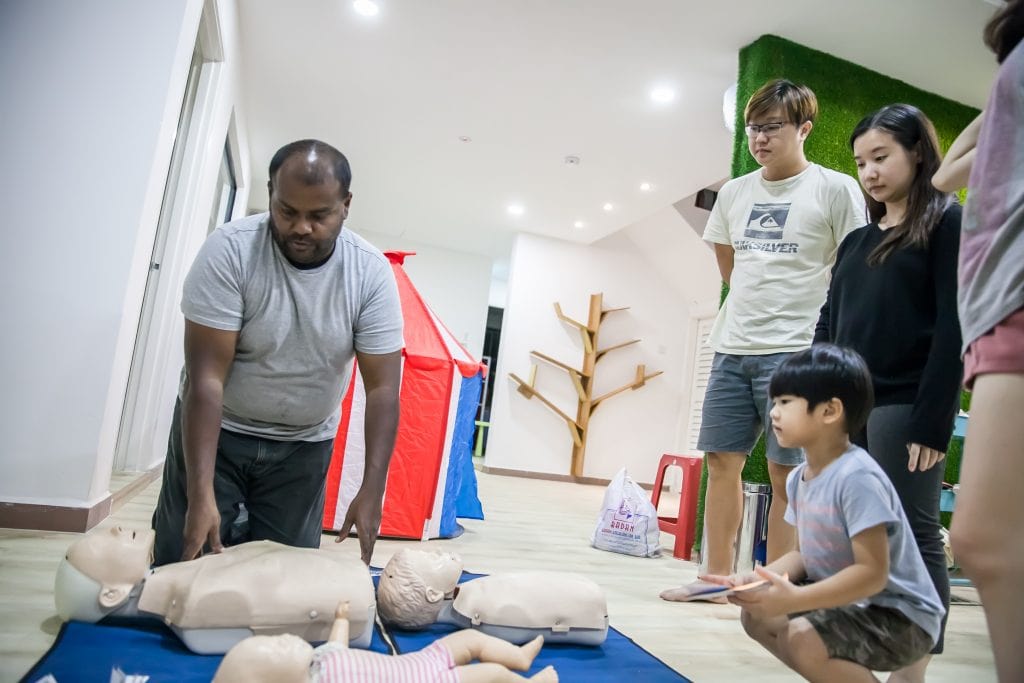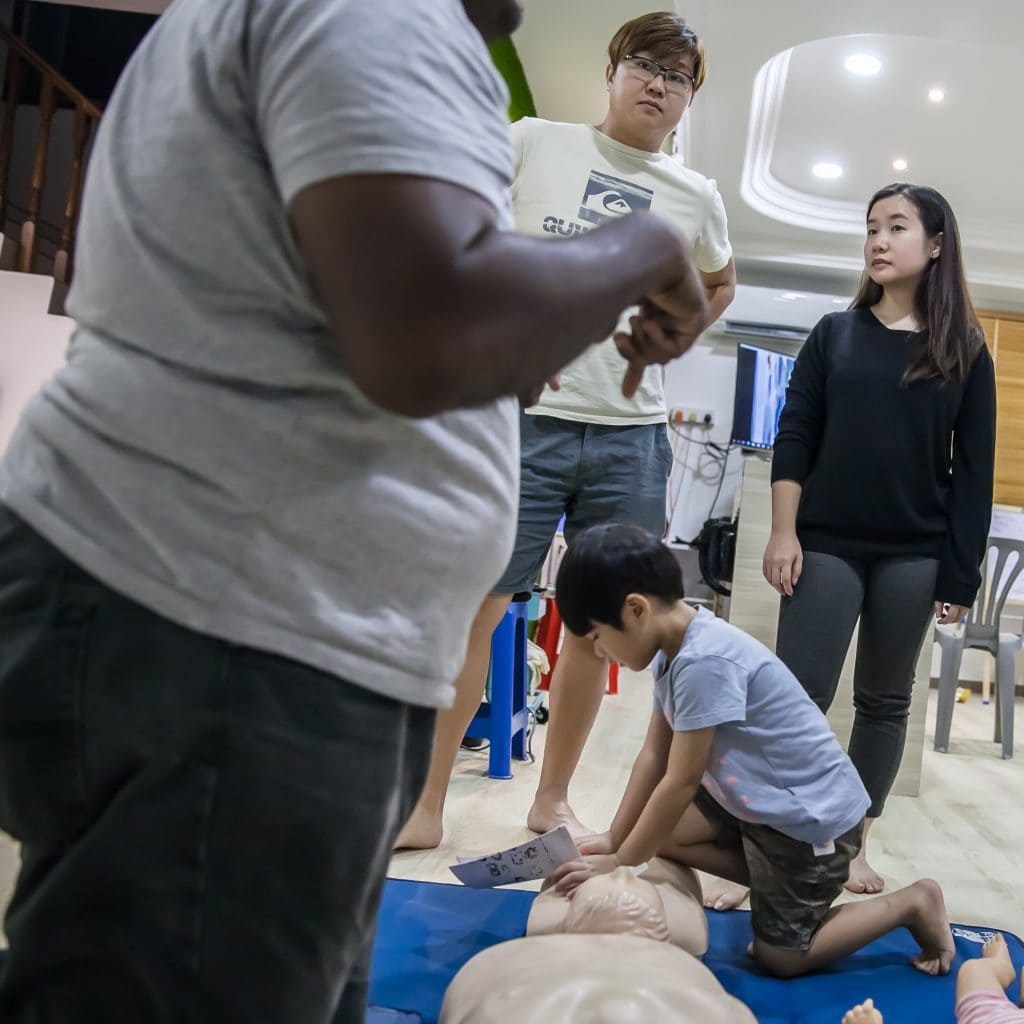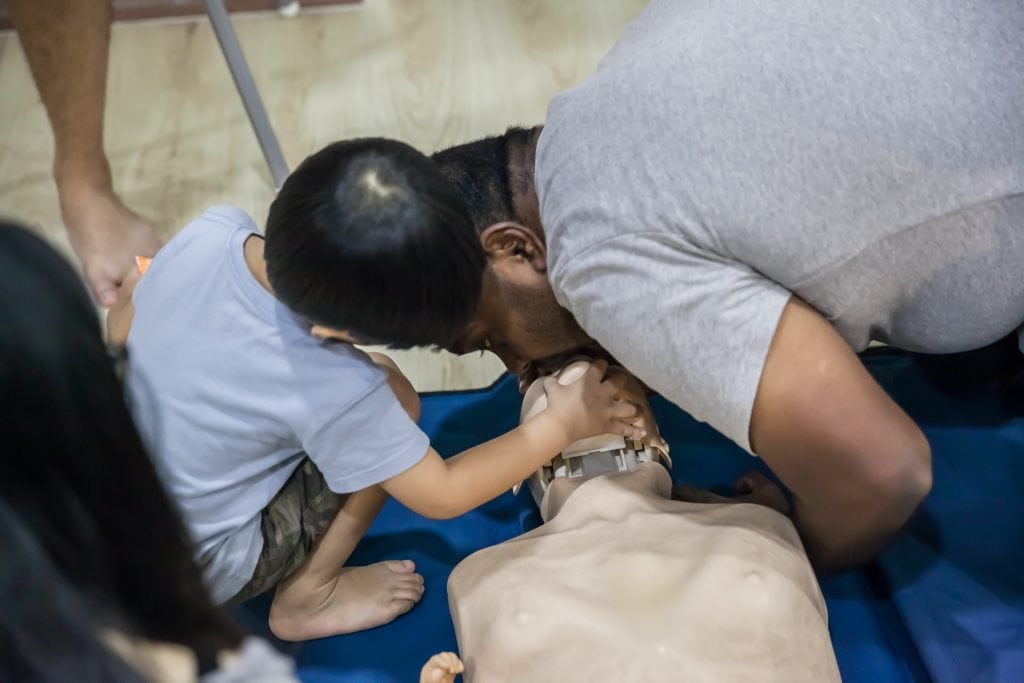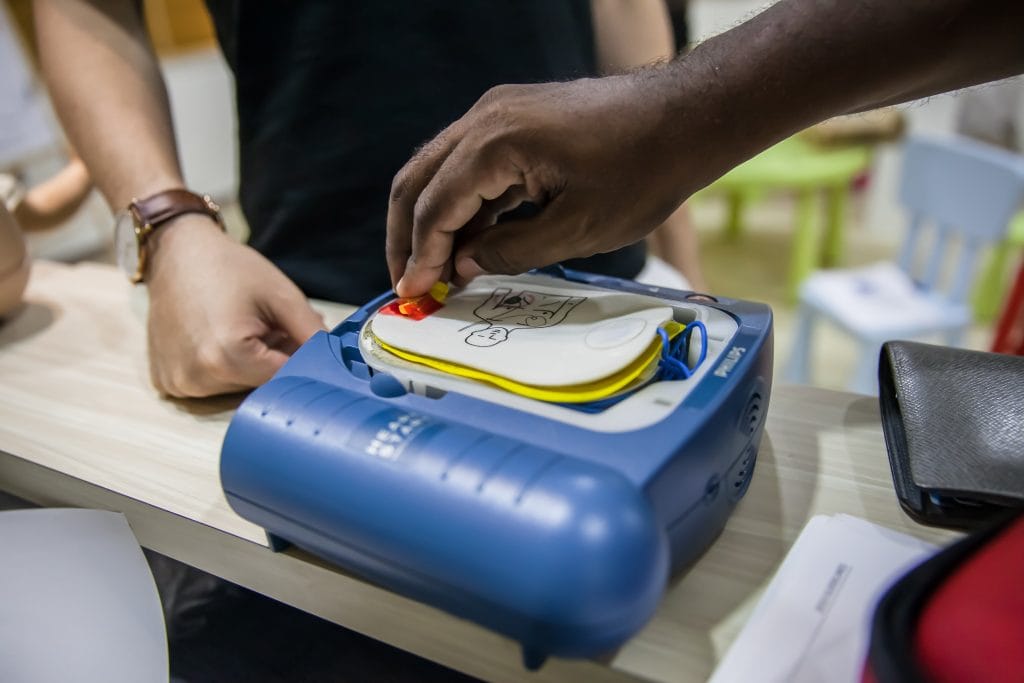First Aid knowledge is invaluable for individual, educators and for community. It enables us to assist persons who become injured in the event of an accident or emergency situation until help arrives. First Aid skills can be applied in the home, the workplace, school or even in public locations. The more First Aid certified people there are in a community the safer that community becomes. Therefore, Stellar Preschool is privileged to have a great trainer, Noel Silas Savarimuthu, to speak to us on a very basic and necessary skill which all should know, first aid & CPR Training. Mr Silas is a certified Emergency Medical Technician from Hospital University Kebangsaan Malaysia (HUKM) currently practicing Pre-Hospital Care with Code Three EMS Services as a fulltime staff and trainer. He is also a member of the Malaysian Red Crescent (MRC) of Petaling Jaya Chapter since 1987. He is a volunteer trainer with Malaysian Red Crescent (MRC) with more than 15 years’ of experience in conducting the following courses: Basic & Advance First Aid, CPR, Disaster Management & Response, Basic Radio Communication, Emergency Vehicle Operations, Pre-Hospital Care Courses and Emergency Department Facilitator.
Many countries have guidelines on how to provide basic life support (BLS) which are formulated by professional medical bodies in those countries. The guidelines outline algorithms for the management of a number of conditions, such as cardiac arrest, choking and drowning. BLS does not include the use of drugs or invasive skills, and can be contrasted with the provision of Advanced Life Support (ALS).
CPR provided in the field increases the time available for higher medical responders to arrive and provide ALS care. An important advance in providing BLS is the availability of the automated external defibrillator or AED. This improves survival outcomes in cardiac arrest cases. Basic life support promotes adequate blood circulation in addition to breathing through a clear airway:
* Circulation: providing an adequate blood supply to tissue, especially critical organs, so as to deliver oxygen to all cells and remove metabolic waste, via the perfusion of blood throughout the body.
* Airway: the protection and maintenance of a clear passageway for gases (principally oxygen and carbon dioxide) to pass between the lungs and the atmosphere.
* Breathing: inflation and deflation of the lungs (respiration via the airway)。
These goals are codified in mnemonics such as ABC and CAB. The American Heart Association (AHA) endorses CAB in order to emphasize the primary importance of chest compressions incardiopulmonary resuscitation.
Healthy people maintain the CABs by themselves. In an emergency situation, due to illness (medical emergency) or trauma, BLS helps the patient ensure his or her own CABs, or assists in maintaining for the patient who is unable to do so. For airways, this will include manually opening the patients airway (Head tilt/Chin lift or jaw thrust) or possible insertion of oral (Oropharyngeal airway) or nasal (Nasopharyngeal airway) adjuncts, to keep the airway unblocked (patent). For breathing, this may include artificial respiration, often assisted by emergency oxygen. For circulation, this may include bleeding control or cardiopulmonary resuscitation (CPR) techniques to manually stimulate the heart and assist its pumping action.
The medical algorithm for providing basic life support to adults in the USA was published in 2005 in the journal Circulation by the American Heart Association.
The AHA uses a four-link “chain of survival” to illustrate the steps needed to resuscitate a collapsed victim:
1. Early recognition of the emergency and activation of emergency medical services
2. Early bystander CPR, so as not to delay treatment until arrival of EMS
3. Early use of a defibrillator
4. Early advanced life support and post-resuscitation care
Bystanders with training in BLS can perform the first three of the four steps. The AHA-recommended steps for resuscitation are known as DR-CAB:
Check for Danger;
check for a Response.
C directs rescuers to perform 30 Compressions to patients who are unresponsive and not breathing normally, followed by 2 rescue breaths.
A directs rescuers to open the Airway;
B directs rescuers to check Breathing but no need to deliver rescue breaths.
C-A-B is recommended in the new AHA EU guidelines. C-A-B should be followed in learning and teaching BLS. Ensure that the scene is safe. Assess the victim’s level of consciousness by asking loudly and shaking at the shoulders “Are you okay?” and scan chest for breathing movement visually. If no response call for help by shouting for ambulance or EMS and ask for an AED ( which is available in offices and building floors).
Assess:* If the patient is breathing normally, and pulse is present then the patient should be placed in the recovery position and monitored. Transport if required, or wait for the EMS to arrive and take over. If patient is not breathing assess pulse at the carotid on your side for an adult, at the brachial for a child and infant for 5 seconds and not more than 10 seconds; begin immediately with chest compressions at a rate of 30 chest compressions in 18 seconds followed by two rescue breaths in 5 seconds each lasting for 1 second.
It was a very useful training and a great session with Mr Silas. Please feel free to write to Mr Silas at nss.lasr@gmail.com or call him at +6014 6476 369 if you or your company would like to conduct any of the courses: Basic & Advance First Aid, CPR, Disaster Management & Response, Basic Radio Communication, Emergency Vehicle Operations, Pre-Hospital Care Courses and Emergency Department Facilitator.
